THE NIGHTMARE BEFORE CHRISTMAS (1993)
Jack Skellington, king of Halloween Town, discovers Christmas Town, but his attempts to bring Christmas to his home cause confusion.
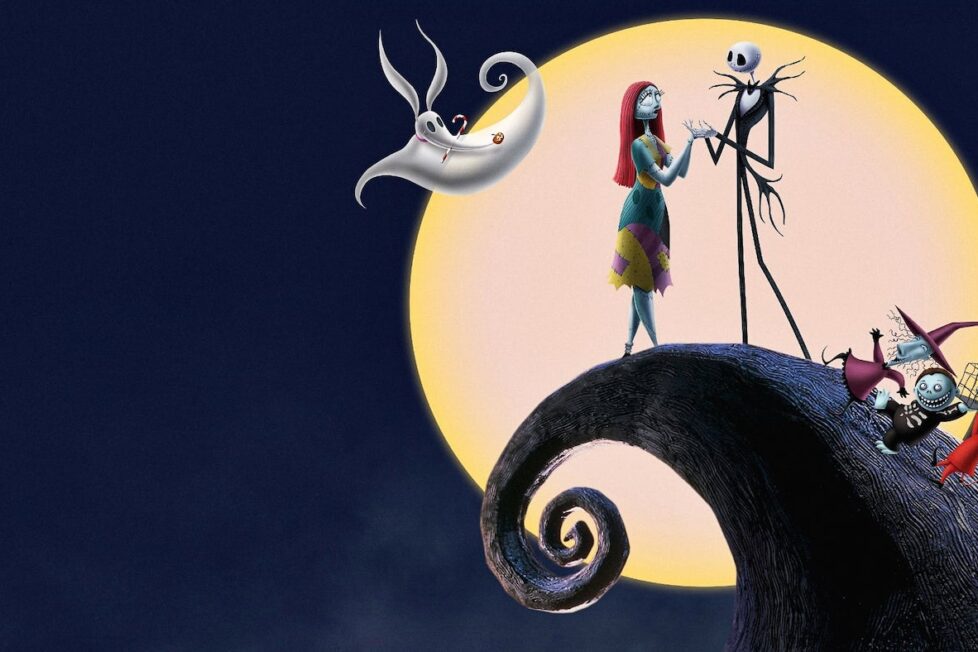
Jack Skellington, king of Halloween Town, discovers Christmas Town, but his attempts to bring Christmas to his home cause confusion.


In total darkness, a chilling cello and violin theme echoes through the air, creating a sense of suspense and cautious intrigue. Red-golden leaves swirl in a chilling gale, and the menacing face of a Jack-o’-lantern comes into view, followed by his spectral scarecrow body. On his glowing head, he bears a sign that reads ‘Halloween Town’.
In a matter of seconds, the theme descends into a plodding, intense beat akin to a marching tune. Transported to another time, you’d be forgiven for thinking you were witnessing a medieval fair. With dishonest civility, you’re invited in: “Boys and girls of every age, wouldn’t you like to see something strange?”
The captivating opening of The Nightmare Before Christmas transports us to a unique world, one with devilish chants that introduce us to a universe with its own set of rules. Shadows appear before gravestones, singing their national anthem with palpable relish. A vivid cast of grotesque characters emerges, loving every second they spend frightening the viewer with their hideous features. The syncopated rhythm creates a jarring effect, keeping us on the edge of our seats as we await whatever might come next.
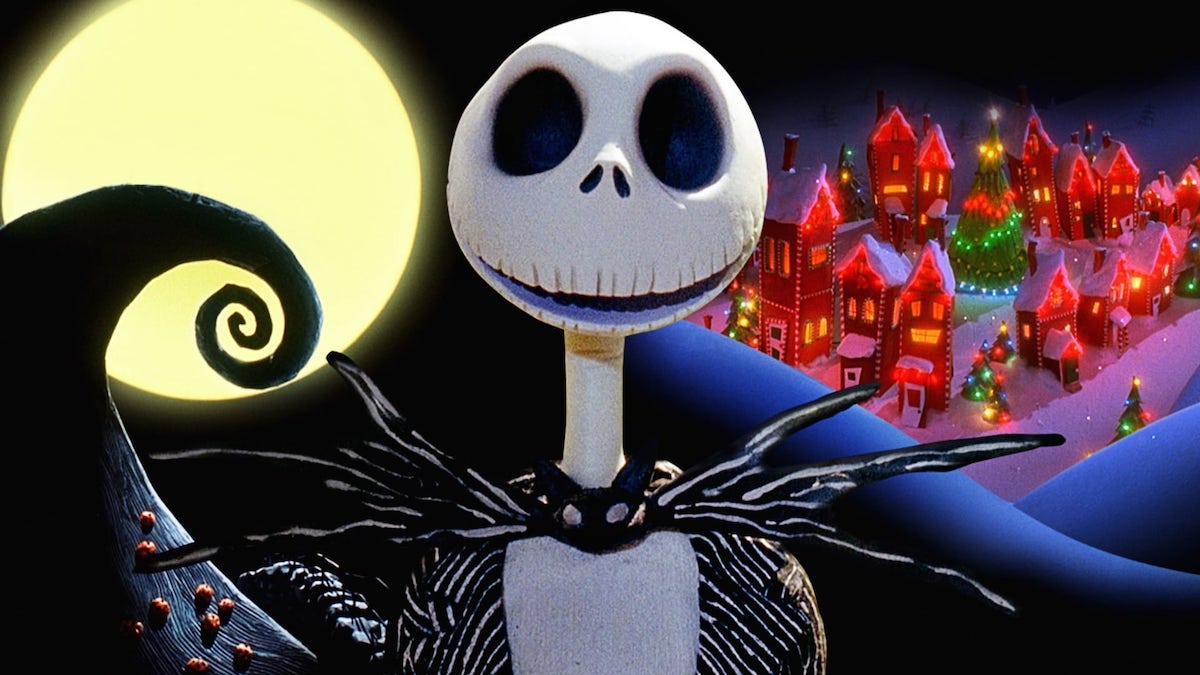
This opening is arguably one of the greatest in cinema history, providing insight into every monster, creature, and supernatural entity that resides in Halloween Town. We learn that they scare us every year because it’s in their nature, much like the monsters in Monsters Inc. (2001) are tasked with frightening the people of the world.
What’s intriguing is that, while the film presents itself as a gleeful celebration of all things sick, twisted, and irreverent, it also has a surprising depth. Don’t get me wrong, much of this film is indeed sick, twisted, and irreverent. However, though The Nightmare Before Christmas may seem like a lighthearted romp about the clash of holiday seasons, filled with characters who delight in doing all things horrible, it can perhaps be more accurately interpreted as a sincere exploration of man’s search for meaning—even if that man is a skinny skeleton.
This theme is prominent in many of the characters, but it’s most obvious in our protagonist, Jack Skellington, the Pumpkin King (Chris Sarandon / Danny Elfman). To any onlooker living in this terrifying place, Jack has charisma and a haunting singing voice that makes skin crawl and wounds ooze—both of which are the greatest of compliments in Halloween Town. He leads all the denizens of this spooky village in their frightful festivities with infallible panache. As he lights himself on fire and swan dives into the nearby fountain, there’s not even a single errant step. To all onlookers, this demonstrates that there’s nothing Jack enjoys more than putting on a great show for Halloween.
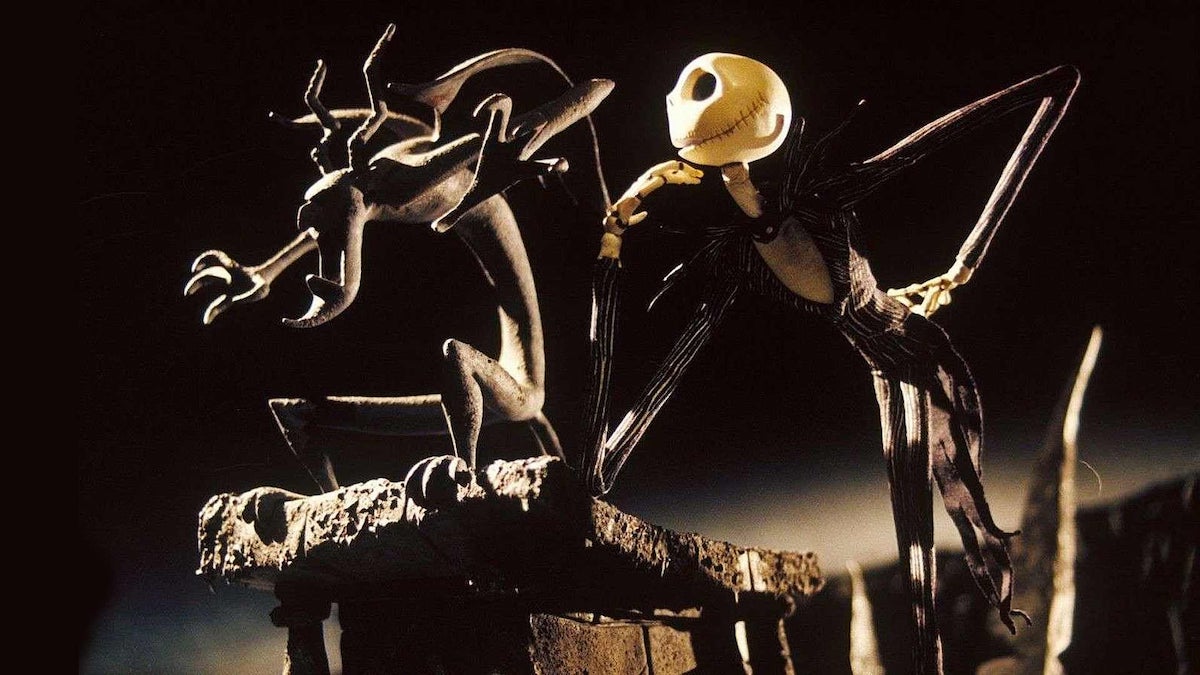
Unfortunately, they couldn’t be more wrong. A great disquiet plagues Jack Skellington. Like the tragic Richard Cory, he’s imperially slim and can flutter the unmoving pulses of all who inhabit Halloween Town. Yet, an immovable case of ennui renders him inconsolable. He seems to be tormented by the question: ‘is this all there is to life?’
While it may seem like a rather dramatic interpretation of the story, one could make the argument that it is exactly why we have seasonal festivities in the first place: to celebrate the passing of time, the gradual culmination of each part of a year and the life that it maintains. As autumn gives way to winter and Halloween to Christmas, we find motivation to do new things or give impassioned, reinvigorated efforts to pre-established hobbies. However, as an immortal skeleton, who is revered for his capacity to perform one holiday ritual once a year, a void opens up before him.
Danny Elfman’s work truly shines in this film. As the renowned composer was experiencing a similar existential crisis at the time, he’s since said that writing Jack Skellington’s woeful lamentations was some of the easiest work he had ever done. This comes through in both the saddening lyrics and Elfman’s chilling singing voice, creating a surprisingly effective performance.
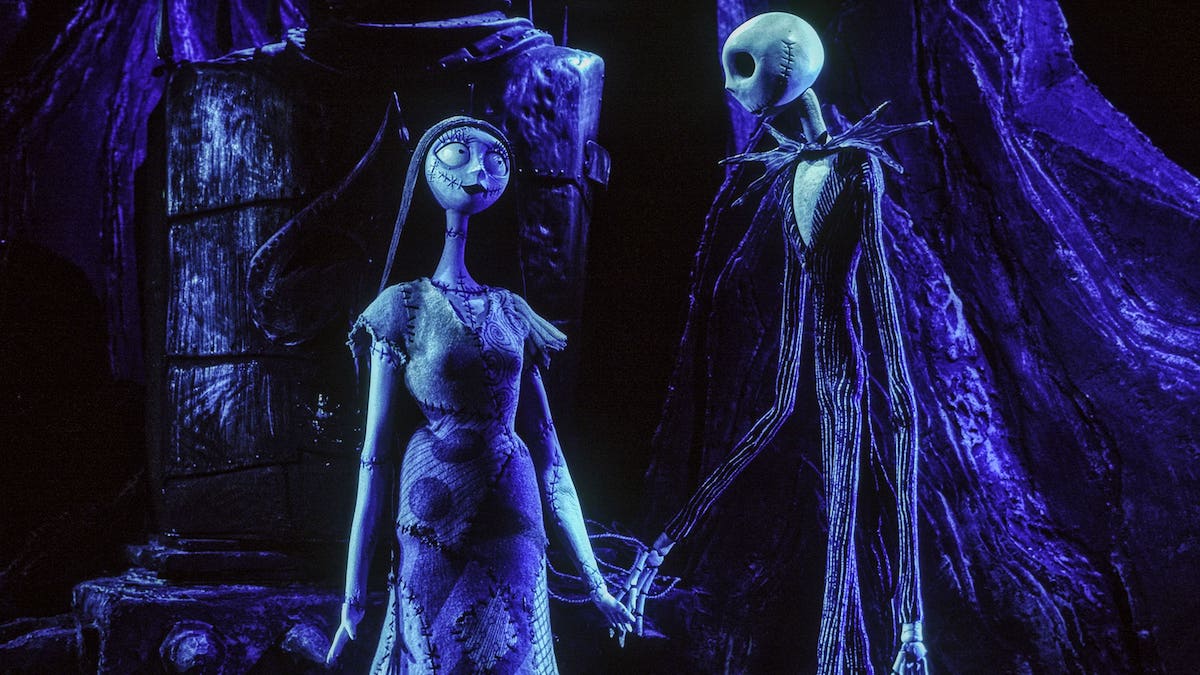
While The Nightmare Before Christmas features this existential crisis at its epicentre, it also has so many jokes between each of Jack’s melancholic musings that we scarcely feel saddened. Additionally, many of Jack’s methods for overcoming his nihilism are light-heartedly comical, so there’s never a risk of experiencing your own malaise while watching. In his attempts to understand a new, strange season, Jack takes to learning as much as he can, conducting experiments and solving “yuletide equations” (or “Christmaths” equations, if you will), but it’s all to no avail.
The first thing that strikes viewers is the repulsive slapstick of Halloween Town, which director Henry Selick exploits to the fullest. Sight gags abound, such as Sally (Catherine O’Hara), a crudely assembled Frankenstein’s bride, undoing a suture to detach her arm from her shoulder and painlessly dismember herself to escape her attacker’s grasp. Her creator, Doctor Finkelstein (William Hickey), is just as comically vile, flipping open his skull to scratch his soft, gooey brain tissue.
The Mayor of Halloween Town (Glenn Shadix) is similarly amusing, being a whimsical take on two-faced politicians with his literal two faces: one for distress, the other for smug self-congratulation. Vampires with disproportionately small heads become ludicrously funny, while Jack’s malformed dog and the amorphous Oogie Boogie garner chuckles whenever they appear. Selick never wastes the creative potential of stop-motion animation. Unlike many modern animated features, The Nightmare Before Christmas feels like it could only have been made as an animation, with the medium itself becoming part of the fun.
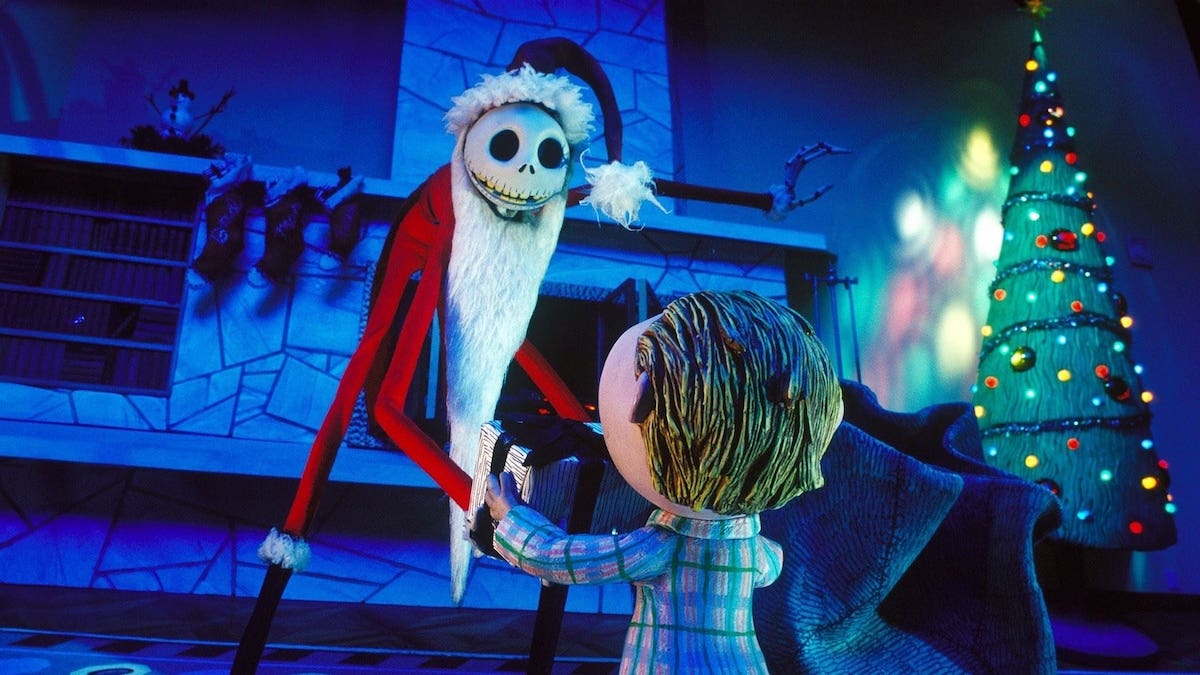
This stop-motion masterpiece is the result of countless hours of hard work by a dedicated team. Creating just one second of film required roughly 12 stop-motion moves, which translates to over 50,000 movements for the entire 76-minute film. But the painstaking effort was worth it, as the end result is one of the most seamless and visually stunning stop-motion films ever created.
Pete Kozachik’s expert cinematography creates a sense of mythical wonder and timeless enchantment, while the art department’s creativity is on full display in the 227 puppets created for the film. Jack Skellington alone has over 400 heads, allowing him to express every nuance of emotion. Through the animators’ meticulous work, these puppets come to life as exquisitely grotesque creations.
Tim Burton’s The Nightmare Before Christmas is a visually stunning film with a unique and compelling story. It is neither childish nor serious, a horror nor a comedy, but rather a strange and beautiful hybrid of all of these genres. Despite the many people involved in its creation, the film retains a strong sense of purity and vision. This is a testament to the collaborative efforts of producer Burton, director Henry Selick, and the rest of the team.
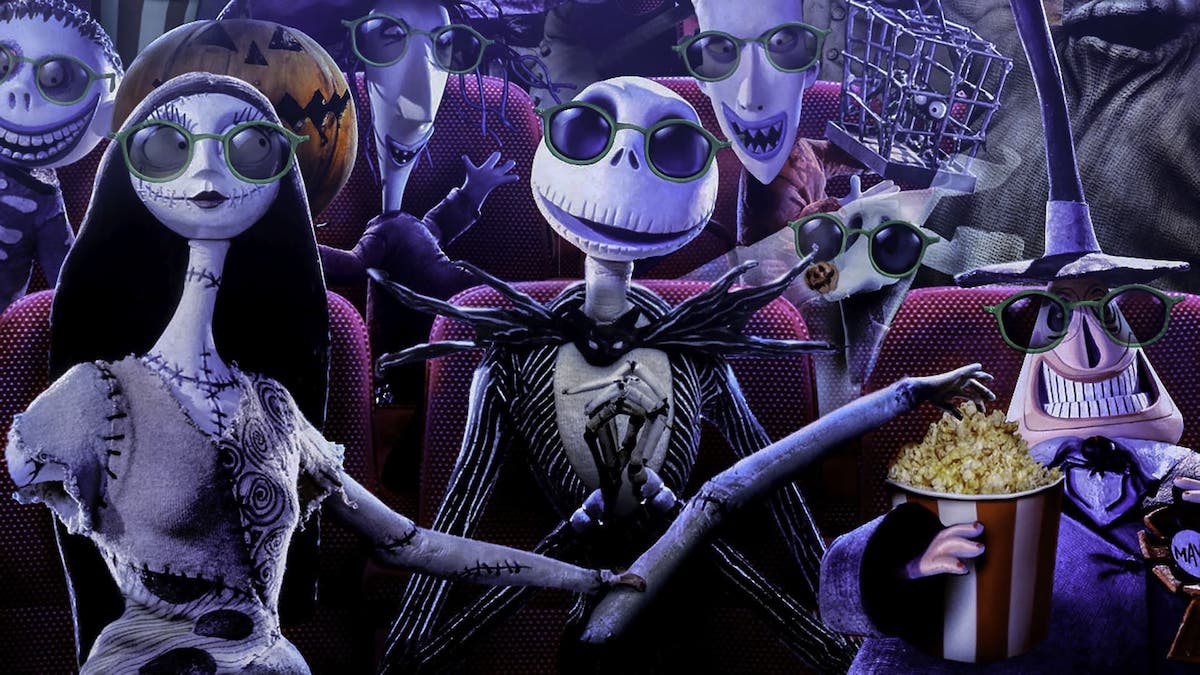
The film’s message is open to interpretation, but one possible takeaway is that it is important to embrace your true self. Jack Skellington’s attempts to reinvent himself as the “Santa Claus of Halloween Town” ultimately fail, because he cannot escape his nature. This is a lesson that we can all learn from.
Jack’s quest for meaning drives him to solve scientific formulas, scour books, and travel the world, seeking something elusive and far away. But his hard-fought journey reveals true happiness and real meaning in something simple: a loving embrace and a kiss by moonlight. Whether you’re an adult or a child, this heartfelt depiction of loneliness vanquished will tug at your heartstrings.
Regardless of interpretation, The Nightmare Before Christmas is essential Halloween viewing. You’ll likely find yourself wanting to rewatch it in just two months, after all, life’s no fun without a good scare.
USA | 1993 | 76 MINUTES | 1.66:1 | COLOUR | ENGLISH

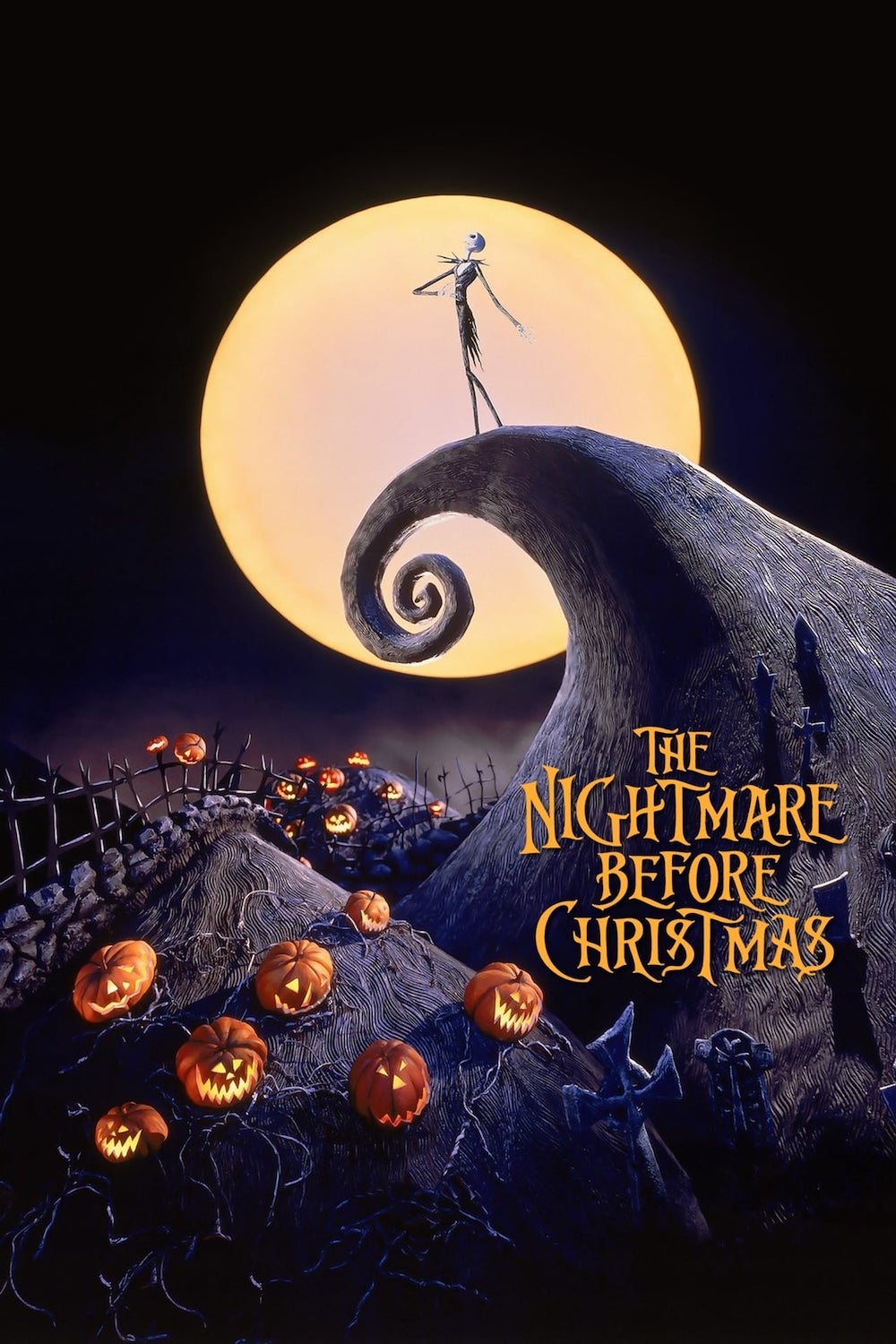
director: Henry Selick.
writer: Caroline Thompson (adapted by Michael McDowell; story by Tim Burton).
voices: Danny Elfman, Chris Sarandon, Catherine O’Hara, William Hickey, Glenn Shadix, Paul Reubens, Ken Page & Ed Ivory.
